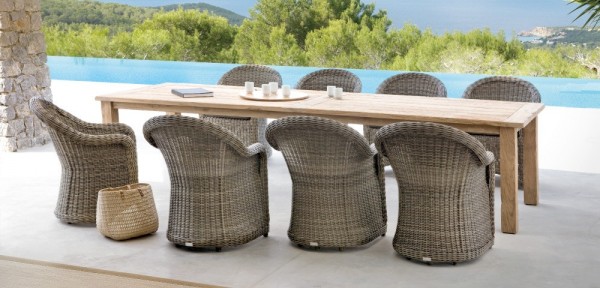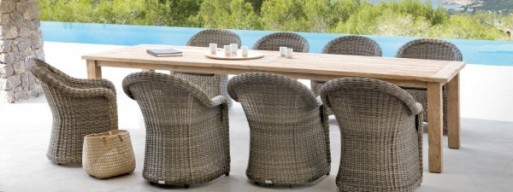
Archaeologists uncovered the first traces of wicker while excavating Egyptian ruins dating back to 3000 B.C., the materials used were mostly reed and swamp grasses, which grew along the Nile River. Wicker items have been found scattered throughout ancient times with evidence of particular widespread in Rome.
Historians believe the popularity of wicker furniture declined in the Dark Ages and rose again in Europe during the sixteenth and seventeenth centuries when wicker was brought over from ancient Rome by ocean explorers. These same explorers were responsible for discovering rattan in Southeast Asia, which became (and still is) the most popular material to make wicker furniture.
It was in England, during the Victorian era (nineteenth century), when wicker really became a popular style, especially for outdoor patio furniture for the elaborate gardens of the time. It is also during this time wicker patio furniture designers began experimenting with different styles and designs.
Although wicker first came to America via the Mayflower in 1620, it did not gain mass popularity until the mid-nineteenth century when Cyrus Wakefield, considered the “Father” of American wicker furniture, founded a rattan importing company in Boston. He began selling it to basket and furniture makers while also developing his own line of wicker fixtures, including wicker patio furniture.
Despite its growing popularity, making indoor wicker furniture and outdoor wicker patio furniture, were both very labor-intensive and it could only be produced in limited quantities. This changed in the late 1860s when the Heywood Brothers invented a loom that could automate part of the weaving process. This minimized the work done by hand and reducing the cost of production. The Heywood Brothers and Wakefield eventually merged their companies and became the uncontested leaders of the wicker furniture industry for decades.
In the early 1900s, customers preferred clean and simple lines and so, wicker furniture, which was still largely inspired by the Victorian era, was considered too ornate. Wakefield and Heywood tried to compete in this new market by altering the designs of their indoor furniture and outdoor patio furniture but they had competition. A furniture designer by the name of Marshal B. Lloyd had begun making more simplistic wicker furniture out of synthetic materials, allowing him to reduce costs even further and sell at a lower price. Wakefield and Heywood eventually purchased Lloyd’s company and continued working with wicker until the Great Depression when they switched their focus to wood and metal. In 1979, they completely stopped making furniture.
For decades, the popularity of indoor wicker furniture and wicker patio furniture went through a series of surges and declines, stabilizing in the 60s and 70s when wicker became trendy again (and still is), especially for outdoor patio furniture.
Today, backyards are an extension of the home; a place to entertain family and friends, host barbecues and parties, or simply relax with a good book. The right outdoor patio furniture is an essential element of this outside living and wicker patio furniture remains a popular choice.


